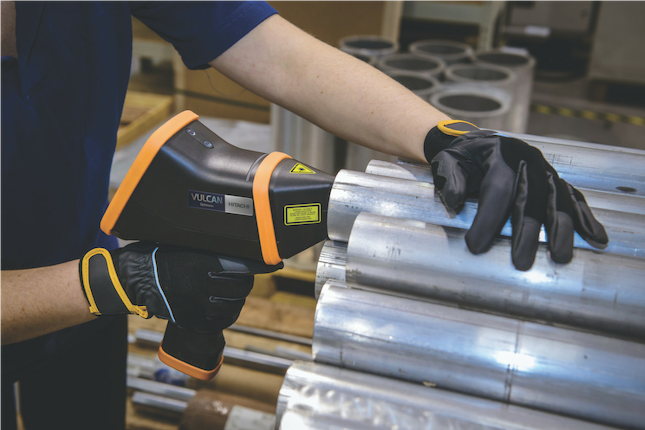The development of aluminium-lithium alloys has created a brand-new class of alloy, combining high strength and high corrosion resistance with ultra-low weight. These properties are especially important to the aerospace industry to reduce weight and improve fuel efficiency, and Al-Li alloys are used in the wings and fuselage of commercial aircraft. The alloy has also been used in Formula 1 racing cars and various spacecraft – again where high strength at low weight is worth the extra cost.
Lithium is a very light, highly reactive element, found in group one of the periodic table. It’s common in batteries, but for most of us the most memorable experience of the element is likely to have been in middle school science class when the teacher demonstrated the violent reaction when lithium metal is added to water. And here lies the problem with Al-Li alloys. Despite the superior strength and low density, the highly reactive nature of lithium means Al-Li alloys must be manufactured in specially designed furnaces. If you add an Al-Li melt to a standard furnace, lithium can react with the refractory walls and destroy them. This isn’t a problem as long as the right alloy is produced in the right furnace. Where it can be a problem is when the aluminium is being recycled.
The recycling market for aluminium is huge. It’s one of the most recycled materials today and only paper and steel are larger. Over 50% of the aluminium currently in production is from recycled material. This saves a lot of energy; the recycling process uses less than a tenth of energy required to produce aluminium from bauxite.
With so much recycled material around, it’s essential that scrapyards and foundries identify and isolate lithium-containing alloys to prevent catastrophic damage to the furnace. Up to now this has been a challenge.
Many techniques used to identify grades of aluminium alloy, such as XRF, simply can’t detect lithium as it’s too light to differentiate.
The latest new handheld laser analyzer from Hitachi High-Tech will identify Li-containing aluminium alloys in just one second.

Introducing the Vulcan Optimum+
The Vulcan series of handheld LIBS (laser induced breakdown spectroscopy) analysers from Hitachi High-Tech are already seen as the category market leaders today and are starting to displace the tradition XRF analysers. With the introduction of the Optimum+ model, you now can sort all aluminium series – including modern aerospace alloys including lithium.
Ideal for manufacturing facilities and scrapyards, the Vulcan Optimum+ fits in your hand, is lightweight and truly portable, and will give you a result in one second. As it’s a laser analyser, there’s no problem with radiation, so you’ll be able to use it anywhere. With a single instrument, you can separate all common wrought aluminium series from 1000 to 8000. The Vulcan can easily differentiate between grades within a series, including the challenging 6061 / 6063, 3003 / 3004 and 7050 / 7075 aluminium alloy grades.
With the new capability of detecting lithium within aluminium alloys, the Vulcan Optimum+ truly can identify all key alloying elements, including Li, Si, Mg, Mn, Cu and Zn, giving you absolute peace-of-mind for accurate, reliable and fast aluminium grade identification.
See the Vulcan Optimum+ in action
To arrange a demo or to get a quote of the Vulcan Optimum+, get in touch.